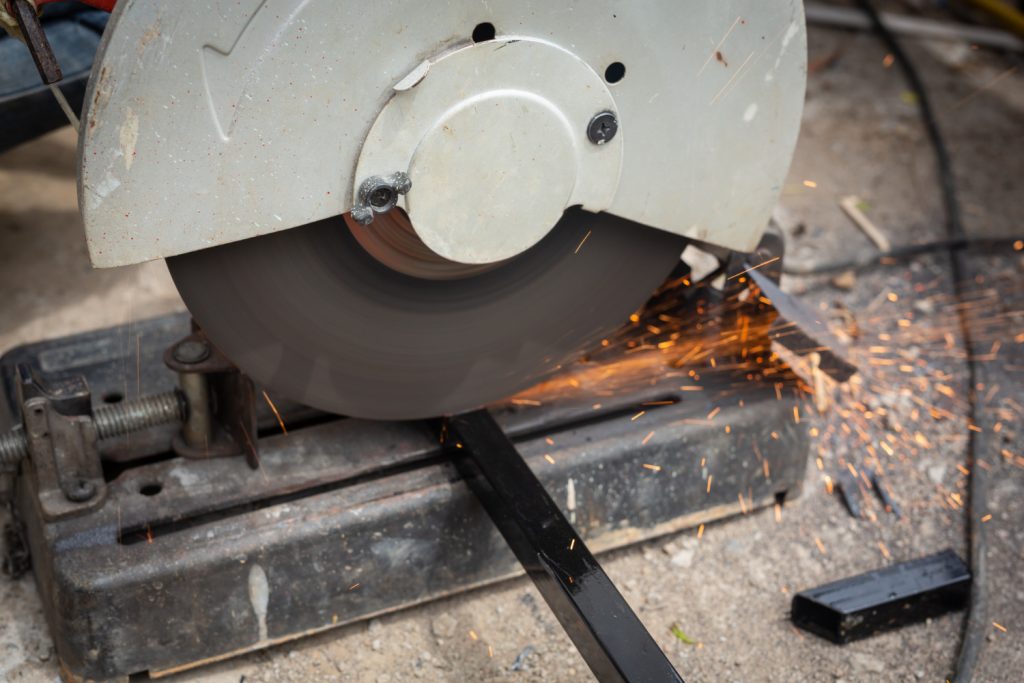Metalworking is a craft that demands precision and skill. Whether you’re a seasoned DIY enthusiast or just starting to explore the world of metal fabrication, one tool you’ll find indispensable is the metal band saw. In this comprehensive guide, we’ll take you through everything you need to know about metal band saw, from their basic components to advanced cutting techniques. By the end of this article, you’ll be well-equipped to make informed decisions about choosing, using, and maintaining your own metal band saw.
Understanding the Metal Band Saw: An Overview
What Is a Metal Band Saw?
A metal band saw is a powerful cutting tool designed specifically for cutting various types of metal, including steel, aluminum, and brass. Unlike traditional saws, which use teethed blades, metal band saws utilize a continuous loop of a sharp, toothless band. This design allows for smoother, more accurate cuts, making it a preferred choice for both professionals and DIYers.
Key Components of a Metal Band Saw
Before we dive into how to use a metal band saw effectively, it’s essential to understand its key components:
- Blade: The blade, also known as the band, is the heart of the band saw. It wraps around two wheels, and its quality significantly impacts the cutting performance. Choosing the right blade for your project is crucial.
- Table: The table is the flat surface where you place your workpiece. It can tilt and adjust to accommodate different cutting angles.
- Guide Bearings: These bearings help keep the blade aligned and reduce friction, ensuring precise cuts.
- Motor: The motor powers the band saw and determines its cutting capacity. Different models come with various motor sizes, so choose one that suits your needs.
Using Your Metal Band Saw Safely and Effectively
Safety First: Gear Up
Before you start cutting metal with a band saw, make sure you have the right safety gear:
- Safety glasses or a face shield to protect your eyes from debris.
- Hearing protection to reduce noise exposure.
- Gloves for a firm grip and hand protection.
- A dust mask or respirator to prevent inhaling metal particles.
Proper Setup and Alignment
Ensure your band saw is correctly set up and aligned. This includes tensioning the blade, adjusting the guides, and aligning the table for precise cuts.
Choosing the Right Blade
Selecting the appropriate blade depends on the material you’re cutting and the type of cut you want to achieve. Blade width, tooth pitch, and material compatibility all play a role in your choice.

Techniques for Precision Cutting
Mastering the art of metal cutting with a band saw involves various techniques, such as straight cuts, curves, and bevels. We’ll guide you through each technique, step by step.
Maintaining Your Metal Band Saw
Regular Cleaning and Lubrication
To keep your metal band saw performing at its best, regular cleaning and lubrication are essential. We’ll provide a maintenance checklist to help you extend the lifespan of your tool.
Troubleshooting Common Issues
Even the best tools encounter problems from time to time. Learn how to identify and troubleshoot common band saw issues, such as blade drift and uneven cuts.
Conclusion
In this comprehensive guide, we’ve covered the essential aspects of metal band saws, from understanding their components to using them safely and effectively. Whether you’re a DIY enthusiast looking to tackle metalworking projects or a professional in need of precise cuts, a metal band saw is a versatile and indispensable tool. With the knowledge and techniques shared in this guide, you’re well on your way to becoming a metalworking maestro. Remember, practice makes perfect, so don’t hesitate to start your metalworking journey with confidence!




